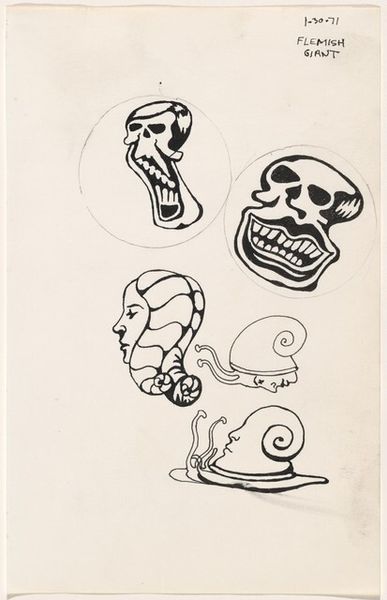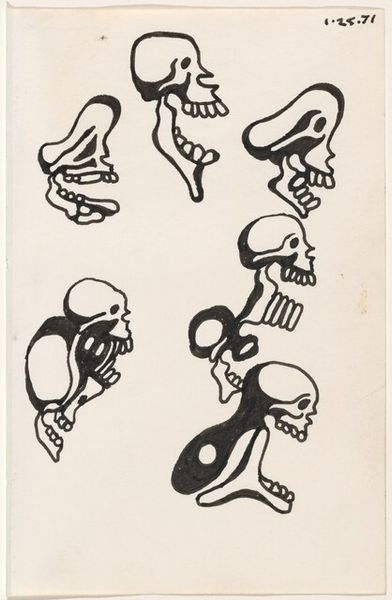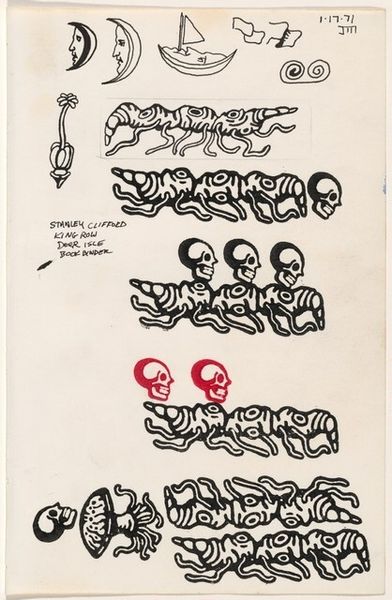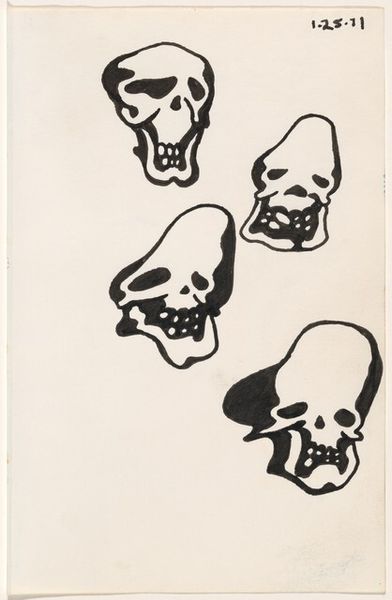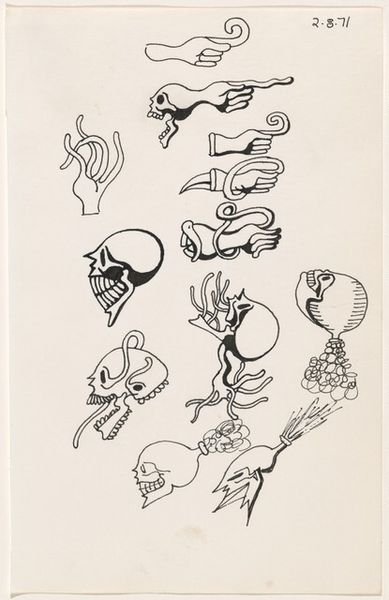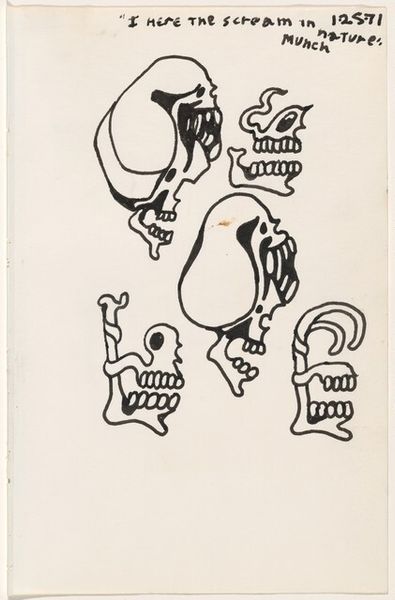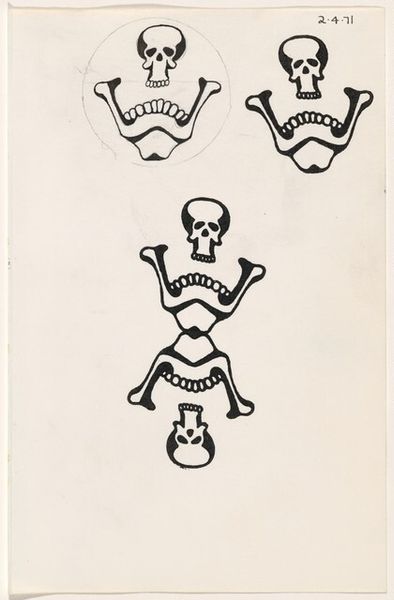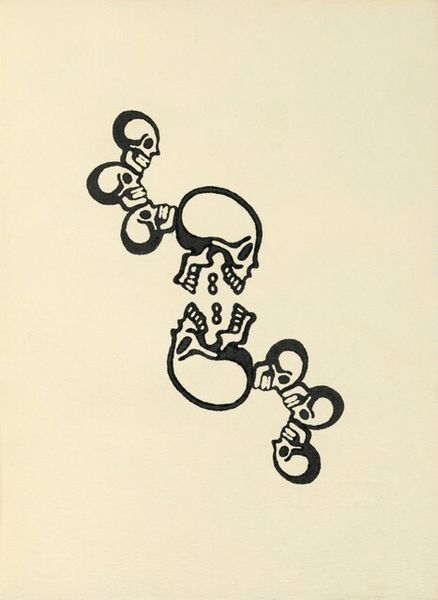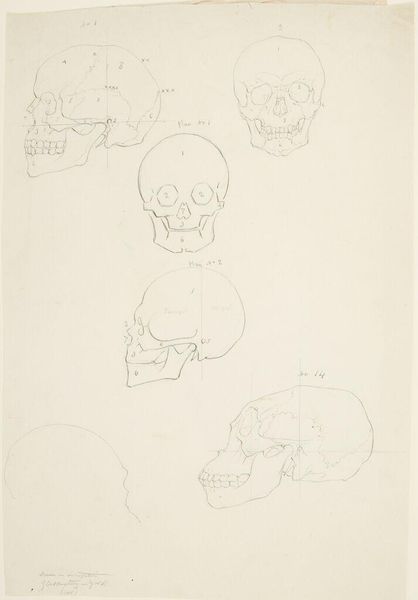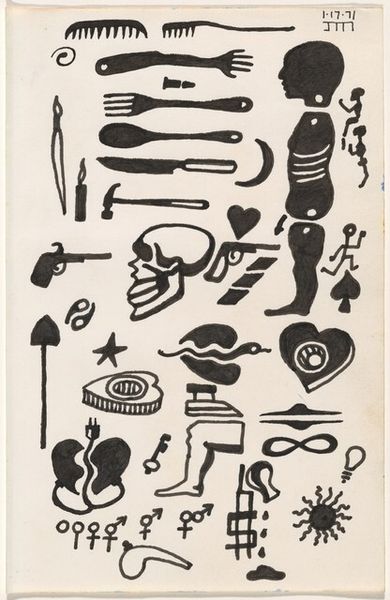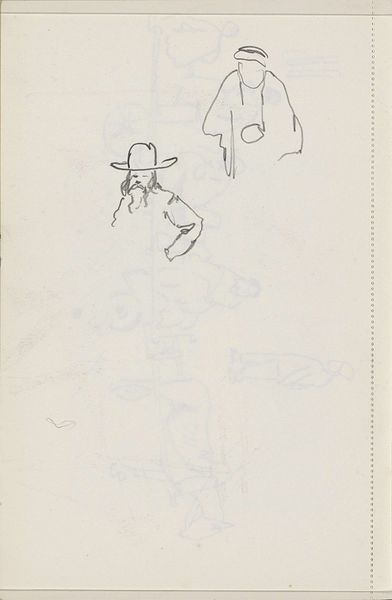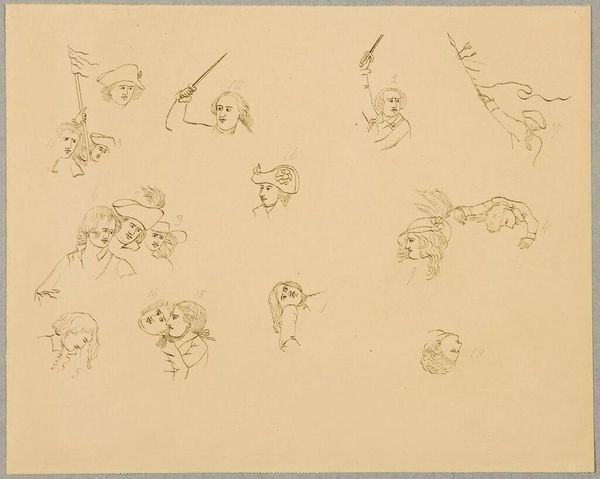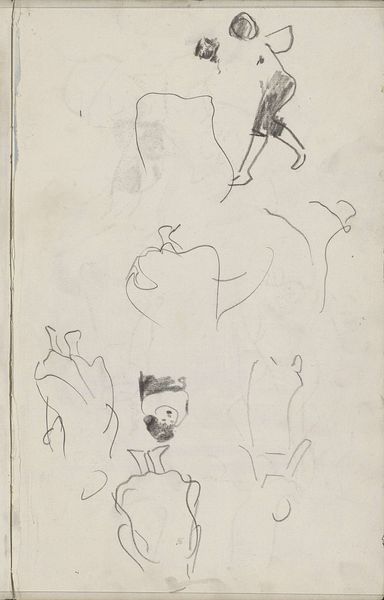![Untitled 1-25-71 [study for "tattoo" book] by James McCracken Jr.](/_next/image?url=https%3A%2F%2Fd2w8kbdekdi1gv.cloudfront.net%2FeyJidWNrZXQiOiAiYXJ0ZXJhLWltYWdlcy1idWNrZXQiLCAia2V5IjogImFydHdvcmtzLzUzYzU1YzIwLWI3YTktNGEzYy05YWM2LWFiZmViOWUxYWU4Ni81M2M1NWMyMC1iN2E5LTRhM2MtOWFjNi1hYmZlYjllMWFlODZfZnVsbC5qcGciLCAiZWRpdHMiOiB7InJlc2l6ZSI6IHsid2lkdGgiOiAxOTIwLCAiaGVpZ2h0IjogMTkyMCwgImZpdCI6ICJpbnNpZGUifX19&w=1080&q=75)
drawing, paper, ink, pen
#
drawing
#
figuration
#
paper
#
ink
#
pen-ink sketch
#
pen
#
modernism
#
erotic-art
Copyright: National Gallery of Art: CC0 1.0
Editor: This is James McCracken Jr.'s "Untitled 1-25-71," a study in pen and ink from 1971 for his “tattoo” book. There's something playfully morbid about all these little skull variations. How do you interpret this work, especially given the social and artistic contexts of the time? Curator: That's a great starting point. Looking at it through a historical lens, consider that 1971 was a period of intense social upheaval and counter-cultural exploration. The rise of tattoo culture moved from the margins to a more visible form of self-expression. Does the sheet read as subversive or even humorous to you, given that history? Editor: I see what you mean. The skulls definitely nod to biker and sailor tattoos, but the hands pointing could imply a sense of direction in that shifting cultural landscape, maybe pushing back against social norms. How was tattoo art received in galleries or museums back then? Curator: The reception was often conflicted. Tattoo art was often seen as 'low' art, clashing with established notions of 'high' art that museums usually supported. Displaying these designs could be seen as democratizing art, breaking down barriers between different social spheres, or pandering to more popular tastes. Think about the institutions—what message might a museum send by showcasing such imagery in that period? Editor: It feels almost like a reclamation. The "tattoo" book would make such imagery a kind of counter-establishment statement. Thank you, I had never looked at it from that perspective. Curator: Absolutely. Examining art through the lens of social and cultural history lets us see how artistic expressions are a conversation with their historical moments. Glad I could help bring some of those elements to light.
Comments
No comments
Be the first to comment and join the conversation on the ultimate creative platform.

